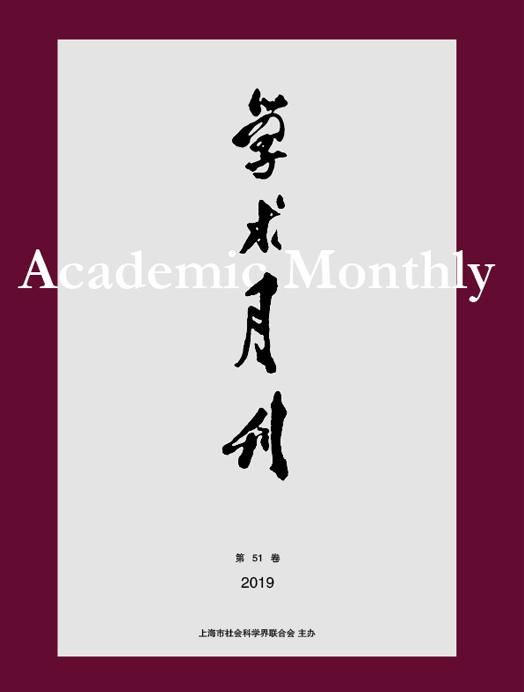Citation:
Xin GU and Qi ZHAO. The Government’s Functioning of Meta-governance in Public Innovation[J]. Academic Monthly, 2023, 55(1): 69-80.

The Government’s Functioning of Meta-governance in Public Innovation
-
Abstract
The functioning of meta-governance for the government is indispensable for government or public innovations. In light of theories of collaborative-interactive governance, the government performs four basic functions for meta-governance, including institution designs, framework building, process management and decision domination. In facing risks and uncertainties, the government needs to pay much attention to three special goals, namely 1) introducing participants with diverse backgrounds, resources and viewpoints; 2) booting multiple actors to accept creative destruction and encouraging them to input resources and bear the risks of innovations; and 3) supporting the cross-border diffusion and dissemination so as to further the public values of innovations. Therefore, the government must take six kinds of mutually complementary meta-governance actions as follows: building framework, formulating visions, managing interactions, mobilizing resources, participating directly and communicating across boundaries. The Chinese government’s idea of social governance manifesting in the guidance by the Party contraction, the domination of the government, as well as multi-actor participation and collaboration and practices of boosting public innovations has provided plenty of sources for the explorations on the theoretical frontier of public innovations.
-

-
References
-
Access
-
-
[1]
Ping FU
. Creating Leading-edge Integrated Governance: The Governance Innovation of Poverty Alleviation in China. Academic Monthly,
2021, 53(7): 121-131.
-
[2]
LI Youmei
. New Public Nature and Paradigm Innovation of Theory of Chinese Society Transformation. Academic Monthly,
2024, 56(2): 5-20.
-
[3]
Zhibiao LIU
. Regional Market Integration and Governance Mechanism Innovation in the Yangtze River Delta. Academic Monthly,
2019, 51(10): 31-38.
-
[4]
Yalin TANG
, Kun QIAN
. “Refinding Residents”: Experts’ Intervening and Reengineering Endogenous Impetus of Innovating Urban Grassroots Governance Model. Academic Monthly,
2020, 52(1): 84-96.
-
[5]
CHEN Jiajian
. Between Administration and Autonomy: The Dual Attributes of Community Finance and Its Governance Mechanism. Academic Monthly,
2023, 55(5): 120-130.
-
[6]
. . Academic Monthly,
2017, 49(06): 83-98.
-
[7]
XIAO Ying
. Family/Home and Social Governance: Values,Methods,Objects and Subjects. Academic Monthly,
2023, 55(7): 115-127.
-
[8]
Tianyu QIAO
, Jinglin XIANG
. The Underlying Logics of Digital Transformation of Social Governance. Academic Monthly,
2022, 54(2): 131-139.
-
[9]
Yong XU
. Fundamental Agenda of the State and Chinese Democracy of Government. Academic Monthly,
2022, 54(3): 101-109.
-
[10]
Shuisheng CHEN
. Public Policy Failure and Its Prevention: An Integrated Analysis Framework. Academic Monthly,
2022, 54(2): 91-102.
-
[11]
Zhenghan CAO
, Jing NIE
, Xiaoming ZHANG
. Centralization and Decentralization of Public Goods Provision in China: The Relations with State Governance. Academic Monthly,
2020, 52(4): 69-83.
-
[12]
HE Qizhi
. A Proactive Government in the Digital Era: From the Perspective of Public Governance. Academic Monthly,
2024, 56(3): 96-106.
-
[13]
. . Academic Monthly,
2017, 49(11): 67-101.
-
[14]
,
. . Academic Monthly,
2018, 50(01): 96-105.
-
[15]
Xiangzhou HE
. The Marginal Model of Public Governance and the Verification of the People-oriented Public Governance Idea. Academic Monthly,
2020, 52(12): 68-78.
-
[16]
Shipeng ZOU
. Marx’s Critique of Hegel’s Philosophy of State and Law and the Basic Orientation of State Socialization. Academic Monthly,
2021, 53(6): 19-30.
-
[17]
Jianxing YU
, Jie REN
. Self-governance, Rule of Law, Rule of Virtue and Their Combination in Community-level Social Governance. Academic Monthly,
2018, 50(12): 64-74.
-
[18]
Liangbo LUO
. The Technical Framework of National Governance: Spatial Remodeling from Management Engineering to Social Engineering. Academic Monthly,
2021, 53(10): 102-117.
-
[19]
Zhaowang CHEN
. Social Control and State Governance Realized by Welfare State. Academic Monthly,
2022, 54(5): 82-94.
-
[20]
XIANG Jinglin
. Sociological Exploration of Financial Governance:A Multilevel Institutional Analysis Framework. Academic Monthly,
2023, 55(5): 131-149.
-
-



 沪公网安备 31010102003103号
沪公网安备 31010102003103号 DownLoad:
DownLoad: